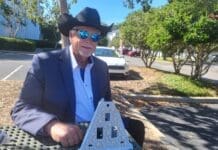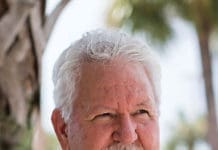By Maurice Stouse
Years ago, as a representative for a major investment firm, I was excited to learn that one of the many benefits my firm was offering was a pension at retirement. It was so great to learn because, as a young trainee, retirement planning was drilled into our heads every single day. We were told that whether we made it or not (all trainees were hired on a 90 day probationary period) we would definitely learn a lot about planning and investing for retirement.
A dependable or predictable stream of income is important throughout our lives. During our working years the dependence on our salary and benefits takes us to the point of retirement, when we are no longer working for a living. The problem today is very few retirees receive a pension. Most estimates put it to be about 15% of the current workforce.
My own situation was an example of this. My firm maintained a pension plan for us for my first 20 years there. But then, something happened. The firm decided they were getting out of pension obligations. They gave us a one-time payout of the present value of our pensions. Many of my colleagues were thinking “what a windfall”. It was a few hundred thousand dollars for many of us. I, and many others saw three immediate problems: First, if we took it out, we would pay huge taxes and a penalty on it (so most rolled it in to an IRA). Second, how best to invest it and third, how to make decisions today so that this could form an income stream in the future.
So the windfall, or more appropriately the present value of that pension was rolled in to an IRA. IRAs form a critical component of building a retirement nest egg, yet many overlook it each year. For many years, prior to 1986, IRA contributions were mostly tax deductible, so many folks had that added incentive. Sadly, after the tax act in 1986, many stopped contributing to their IRAs. That could be another handicap on building a replacement for a pension in retirement.
These investments, in addition to 401ks or 403bs can all build an income stream so at retirement there are options available to replace a pension. An investor or saver could build their own, and calculate how long the nest egg could last with a given return and withdrawal rate. Many call that a systematic withdrawal plan. Or, if the sum is great enough, many folks can invest the lump sum at retirement and live off of the dividends or interest. There are a lot of alternatives. Another example is an annuity that insurance companies offer which starts with an initial investment and then each year, it builds an income base for several years. Once turned on, the income stream then pays an individual and joint survivor (if chosen) for a given period or for the rest of his or her life.
Whatever your situation or wherever you are in life, contact or visit with your advisor today and start or continue the conversation on income in retirement.
Maurice Stouse is a Financial Advisor with Raymond James and he resides in Grayton Beach. He has been in financial services for over 31 years. His office is located at Raymond & Associates, Inc., 34851 Emerald Coast Parkway, Suite 200, Destin, FL 32451. Raymond James advisors do not offer tax advice. Please see your tax professionals. Raymond James & Associates, member New York Stock Exchange/SIPC. Phone 850.460.1995. Email: Maurice.stouse@raymondjames.com.
Views expressed are the current opinion of the author and are subject to change without notice. Information provided is general in nature, and is not a complete statement of all information necessary for making an investment decision, and is not a recommendation or a solicitation to buy or sell any security. Past performance is not indicative of future results. There is no assurance these trends will continue or that forecasts will occur. Investing always involves risks and you may incur a profit or a loss. No investment strategy can guarantee success.






























































